Hello dear gardeners.
I am happy to stop by and share again some things that I have been able to harvest the last weeks, and that man, have me very excited, because it is a fruit that I love very much, both me and my wife, and that also brings a lot to our body.
Here we call it "Cambur".
In other regions they are called "Guineos", and so on. It is interesting, because so far I know about 15 types of cambur.
For example, Cambur concha verde, Cambur manzano, Cambur rabo de mula, etc.
I like this product very much, on the one hand, because it requires little care, and I mean that with a good fertilizer and enough water, you can keep a healthy plant that gives good fruits.
What do you think of this bunch?

At 3 months I added Urea in grain, which breaks down after a month around the plant, and provides it with a rich nitrogen, which allows, among other things, the roots to grow a little more, and absorb nutrients better.
So, do you have any idea how many hands it has?
11 hands. A total of 25kg. 25kg! The whole bunch of course.
I'm excited because it's the first one like this, and that I can enjoy it too.
Honestly, maybe it could have grown a little more, but the delinquency in this area is continuous, so I decided to cut it even though it would be a couple of weeks before it was fully mature.
But even so, they are in perfect condition for sale or consumption.
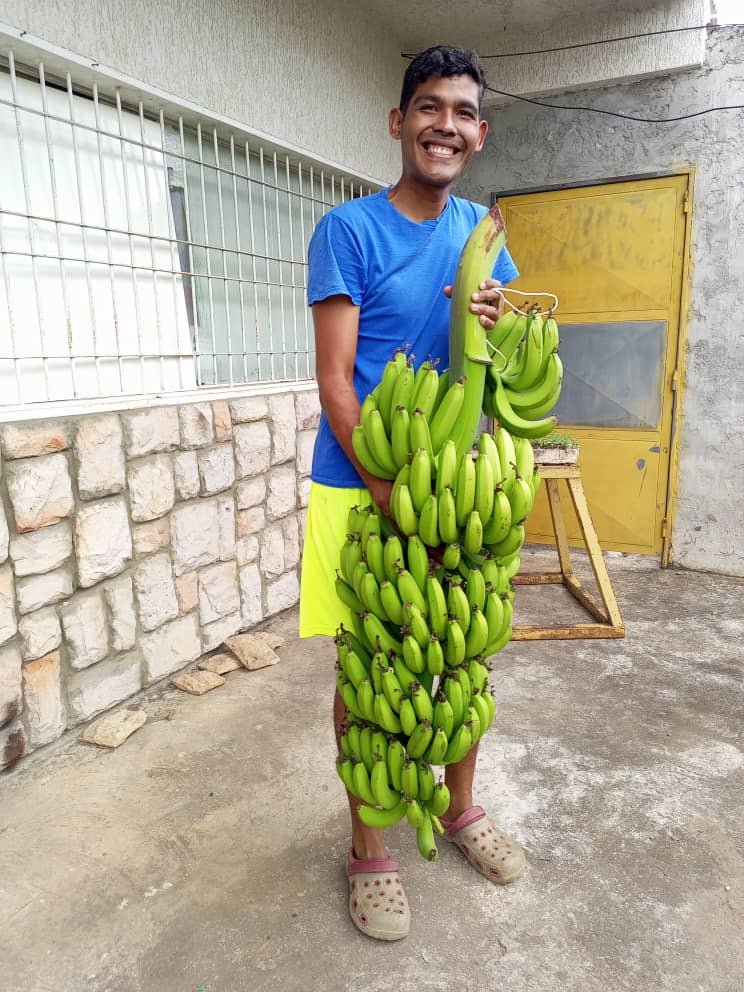
Why do I always like to plant this crop?
For one thing, because the Cambur is very nutritious, less stressful to care for than others.
But also, I like the simple fact that as long as a bunch is growing, there are already new seeds growing, and that in turn, allowing the harvest to be continuous and long lasting.
For example, in this case, you can see what, the new plant or seed, has almost 2 meters, and although it lacks a few months, comes with a good thickness of trunk so then I deduce that it will be a good cluster, perhaps like the first plant, of 11, or why not more.
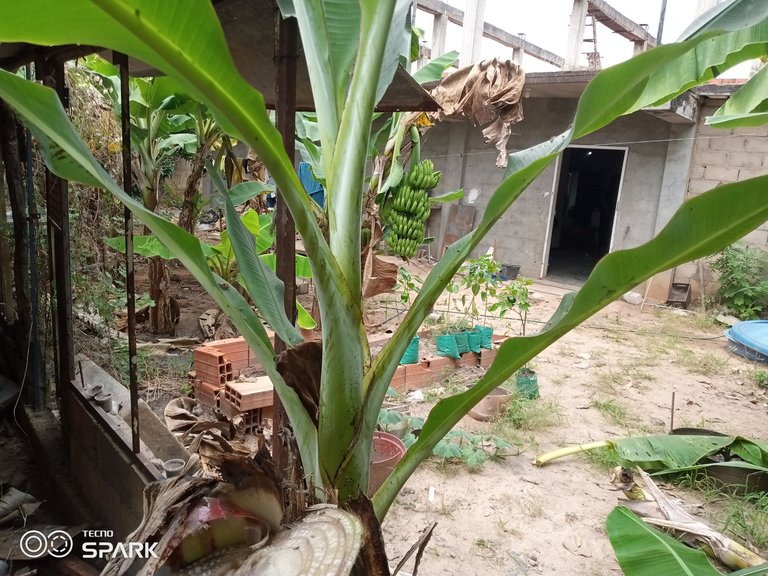
But I will tell you how I cut the bunch.
Once I have selected the bunch to cut, I put a bag over it, which will cover the whole bunch, leaving only the stem that joins all the hands.
As shown in the picture:
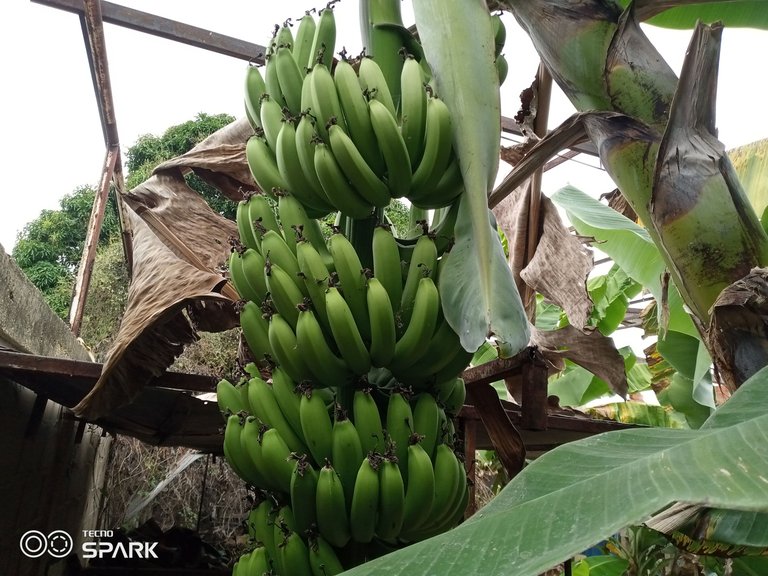
What is the reason?
Once the bunch is cut, the liquid that comes out of the stem can quickly stain the Camburs, so if I use them to sell, and a little bit falls on them, it can stain them, and make the shell turn black, so with this I avoid that to happen.
Besides, I have to carry it to another place, and so it is easier than when all Cambures hands are loose and can also stain clothes.
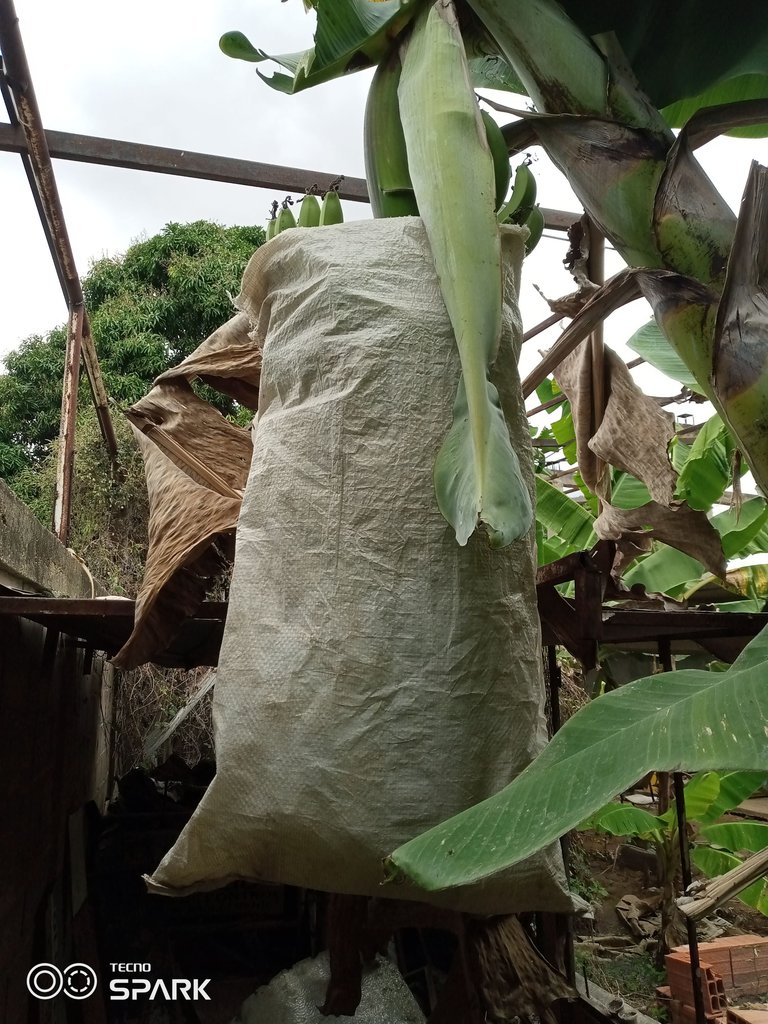
I like to leave the stem of the plant in the middle, that is, after cutting the bunch, cut it and leave it like that until it dries and falls by itself.
That way, the mother plant, which would be the one I cut, can give some nutrients to the new seeds that are growing.
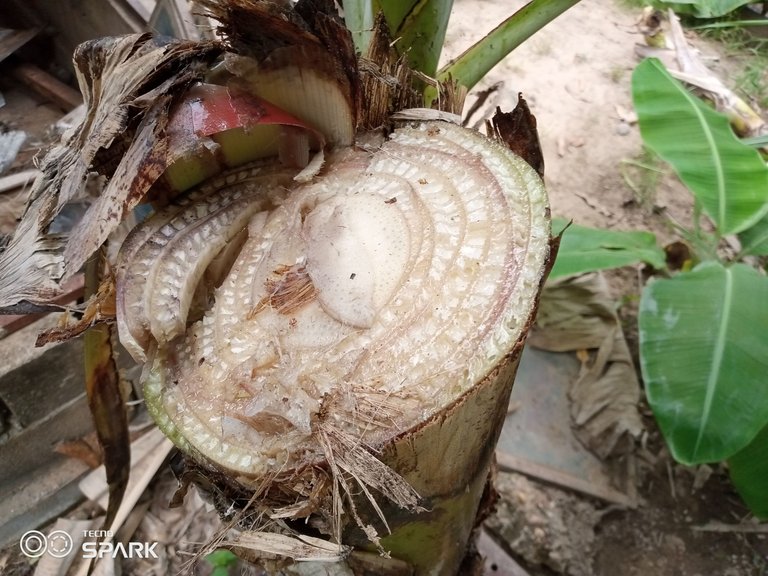
Here it is, after having cut it in a simple way, and after having weighed it.
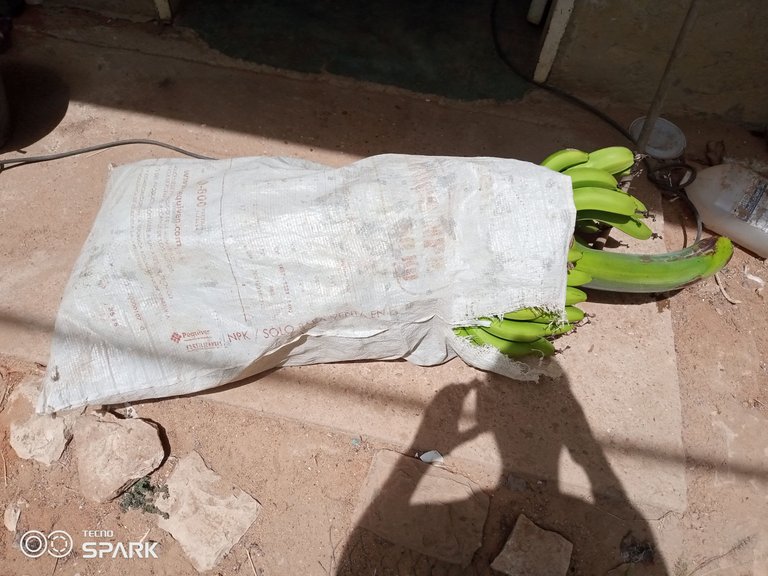
I really feel that this is one of the things that gives me a lot of joy. Not only do I benefit myself and my family, but I also contribute to the ecosystem so that there are more plants and thus improve the air and the quality of life.
I feel more and more that it is essential to grow plants, and then experience for ourselves the joy of harvesting.
Spanish Version
Hola queridos jardineros.
Estoy feliz de pasar por aquí y compartir nuevamente algunas cosas que he podido cosechar las últimas semanas, y que hombre, me tienen muy emocionado, pues es una fruta que me gusta mucho, tanto a mi como a mi esposa, y que además nos aporta mucho a nuestro organismo.
Aquí la llamamos "Cambur".
En otras regiones se llaman "Guineos", y así sucesivamente. Es interesante, porque hasta ahora conozco unos 15 tipos de cambur.
Por ejemplo, Cambur concha verde, Cambur manzano, Cambur rabo de mula, etc.
Me gusta mucho este producto, por un lado, porque requiere pocos cuidados, y me refiero a que con un buen abono y suficiente agua, se puede mantener una planta sana que da buenos frutos.
¿Qué os parece este racimo?

A los 3 meses añadí Urea en grano, que se descompone al cabo de un mes alrededor de la planta, y le aporta un rico nitrógeno, que permite, entre otras cosas, que las raíces crezcan un poco más, y absorban mejor los nutrientes.
Entonces, ¿tienes idea de cuántas manos tiene?
11 manos. Un total de 25kg. ¡25 kg! Todo el montón, por supuesto.
Me hace ilusión porque es el primero así, y que yo también pueda disfrutarlo.
Sinceramente, quizás podría haber crecido un poco más, pero la delincuencia en esta zona es continua, así que decidí cortarlo a pesar de que pasarían un par de semanas antes de que madurara del todo.
Pero aun así, están en perfectas condiciones para su venta o consumo.

¿Por qué siempre me gusta plantar este cultivo?
Por un lado, porque el cambur es muy nutritivo y menos estresante de cuidar que otros.
Pero también, me gusta el simple hecho de que mientras un manojo está creciendo, ya hay nuevas semillas creciendo, y eso a su vez, permite que la cosecha sea continua y duradera.
Por ejemplo, en este caso, se puede ver lo que, la nueva planta o semilla, tiene casi 2 metros, y aunque le faltan unos meses, viene con un buen grosor de tronco por lo que deduzco entonces que será un buen racimo, quizás como la primera planta, de 11, o por qué no más.

Pero os voy a contar cómo corto el racimo.
Una vez seleccionado el manojo a cortar, le pongo encima una bolsa, que cubrirá todo el manojo, dejando sólo el tallo que une todas las manos.
Como se muestra en la imagen:

¿Cuál es el motivo?
Una vez cortado el manojo, el líquido que sale del tallo puede manchar rápidamente los Cambures, por lo que si los uso para vender, y les cae un poco encima, puede mancharlos, y hacer que la cáscara se ponga negra, por lo que con esto evito que eso ocurra.
Además, tengo que llevarlo a otro sitio, y así es más fácil que cuando todos los Cambures tienen las manos sueltas y también pueden manchar la ropa.

A mi me gusta dejar el tallo de la planta en medio, es decir, después de cortar el manojo, cortarlo y dejarlo así hasta que se seque y caiga solo.
De esa forma, la planta madre, que sería la que corté, puede dar algunos nutrientes a las nuevas semillas que están creciendo.

Aquí está, después de haberla cortado de forma sencilla, y después de haberla pesado.

Realmente siento que esta es una de las cosas que me da mucha alegría. No sólo me beneficio yo y mi familia, sino que contribuyo al ecosistema para que haya más plantas y así mejorar el aire y la calidad de vida.
Cada vez siento más que es esencial cultivar plantas, y luego experimentar por nosotros mismos la alegría de la cosecha.
Ismael D. Rodríguez
Discord ismaelrd04#9345
Gracias a estos Testigos por hacer de Hive, el mejor lugar en todo lugar: @guiltyparties @enginewitty @thealliance @c0ff33a



